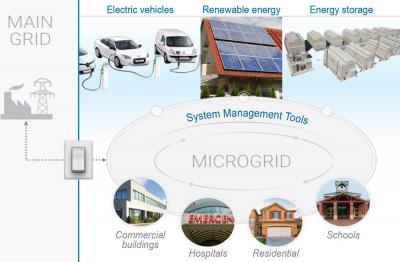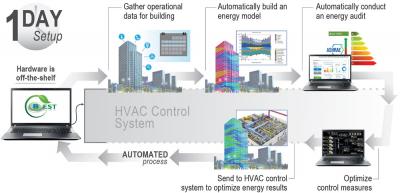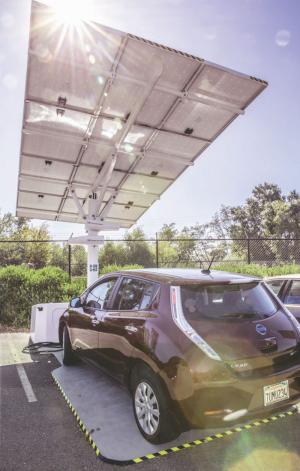Solutions for Your Community's Energy Needs
Leveraging advanced technology to create a resilient, sustainable, cost-effective energy infrastructure.
Scientists and engineers at Lawrence Livermore National Laboratory (LLNL) are leading efforts to develop innovative solutions to our nation's energy challenges. We invite you to learn more about opportunities to collaborate with LLNL to strengthen your community's energy system, with solutions that are tailored to local needs.
LLNL's energy expertise and advanced technology can help you create the optimal system for your community. Together, we can:
- Identify opportunities
- Evaluate options
- Prioritize actions
- Implement solutions
- Invest strategically
Power Grid Efficiency and Resilience
Resilient Microgrids that Minimize Outages and Speed Recovery
Large-scale disasters and smaller, localized events can result in widespread power outages. It can be challenging to rebound from these outages, as time consuming, manual processes are used to re-start electrical systems. Communities with a large penetration of distributed energy resources (DERs), such as rooftop solar, are often unable to access local resources during outages. Microgrids enable communities to provide a reliable source of locally-generated energy, regardless of the fluctuating demand and the availability of energy from the main power grid. However, most microgrids cannot operate independently of the main power grid for more than a few hours.
Experts at LLNL developed a tool that enables microgrids to operate autonomously for more than 7 days. The system management tool can identify and engage available DERs and optimize the microgrid's configuration in response to evolving resource availability. LLNL is currently partnering with California communities to demonstrate the capabilities of this innovative tool.
Evaluating the Impact of New Grid Components
Grid modernization efforts typically involve adding new types of distributed energy resources, such as rooftop solar, wind turbines, or energy storage technology. Yet it can be challenging to determine which DER technology to implement to make a community's grid more effective and resilient.
LLNL offers a testbed where grid operators can evaluate options before investing in new DER technology. The testbed makes it possible to conduct detailed, realistic, high-fidelity modeling of complex power systems. With testbed modeling, operators can gain insight into system behavior and interaction between grid components, exploring the impact of each option.
Smart Building Solutions
Managing Energy Consumption in Commercial Buildings
Commercial buildings consume 42% of the electricity used in the U.S. each year. Many building owners recognize that a more efficient heating and cooling (HVAC) system could help them reduce energy consumption and save money, yet they can't afford to hire energy auditors and HVAC engineers to guide selection and implementation of the best system. They want solutions that are affordable, easy to implement, and provide rapid results.
LLNL's energy efficiency optimization system makes it possible to reduce energy consumption in commercial buildings by 20–30%. It is simple to use and inexpensive to install, and it starts providing a return on investment in the first month. The software integrates with existing HVAC equipment. It analyzes a building's energy consumption patterns, pinpoints areas of inefficiency, and automatically adjusts HVAC controls in response to changing conditions.
Energy Consumption Plans for Residential Customers
Automated demand response (ADR) tools, such as smart meters, can be used to adjust energy consumption in response to fluctuating energy availability. However, they are not typically used to serve low-income households due to concerns regarding increasing the burden on these customers.
Energy experts at LLNL are piloting new ways to leverage the information available from ADR tools to improve the two-way flow of energy between households and distributed energy resources. LLNL's modeling tool provides an in-depth analysis of household energy consumption data, making it possible to identify a household's flexibility to adjust energy consumption. With this data, plans can be tailored to customer needs, automatically shifting to available DERs to meet the fluctuating energy needs of households.
Optimized Electric Vehicle Fleets
Effective Deployment of Electric Commercial Fleets and Community Car-share Programs
In many communities, fleet managers are exploring the benefits of converting their vehicles to electric power. However, they are concerned about how to charge vehicles in a busy, highly mobile, electric fleet.
LLNL is leveraging its expertise in data analytics to help communities evaluate options when considering transportation electrification. Our tools can help planners analyze a range of deployment scenarios and identify the optimal vehicle charging infrastructure and schedule, as well as the optimal vehicle type and location of charging units.










